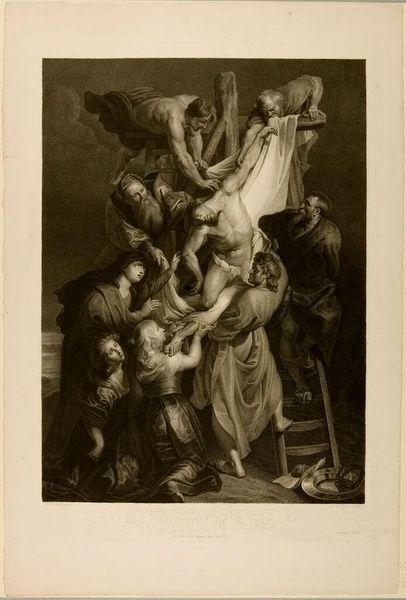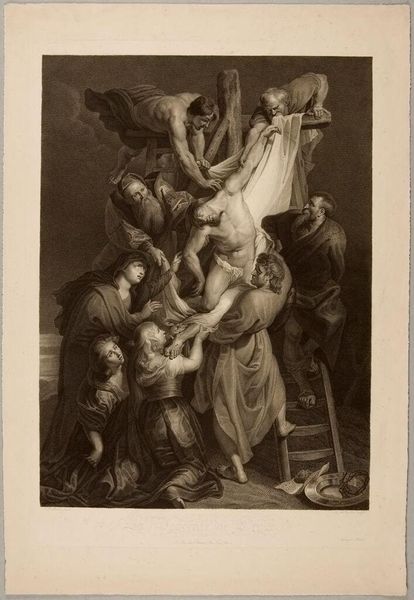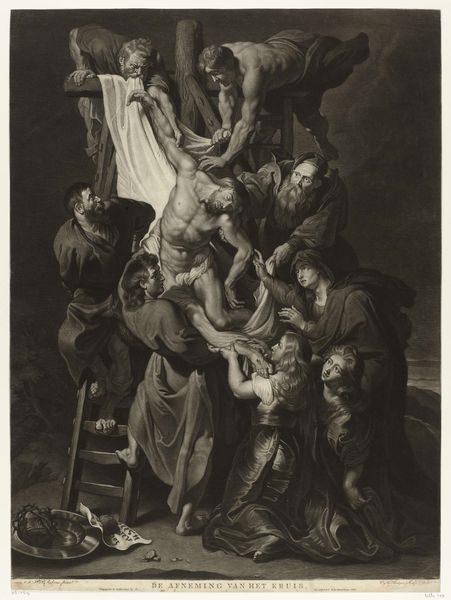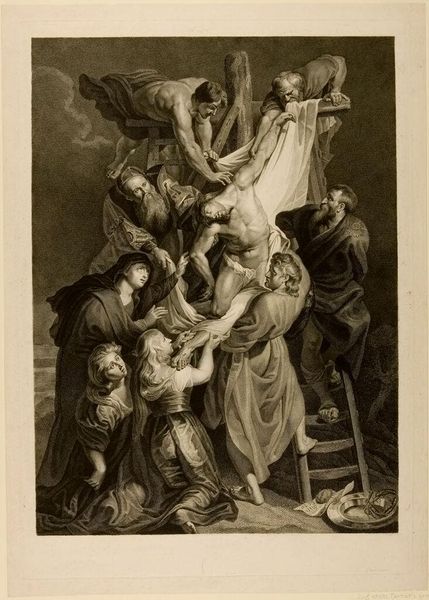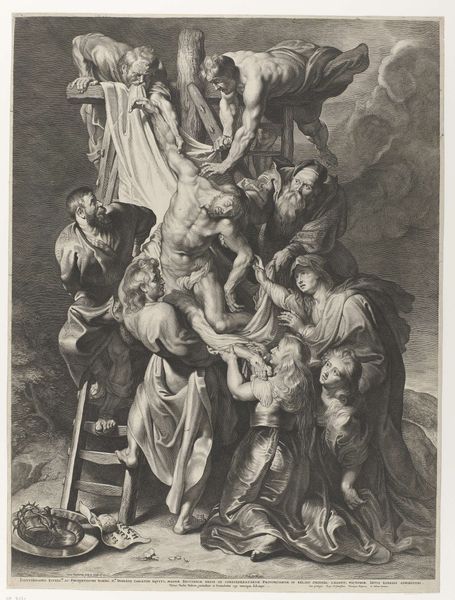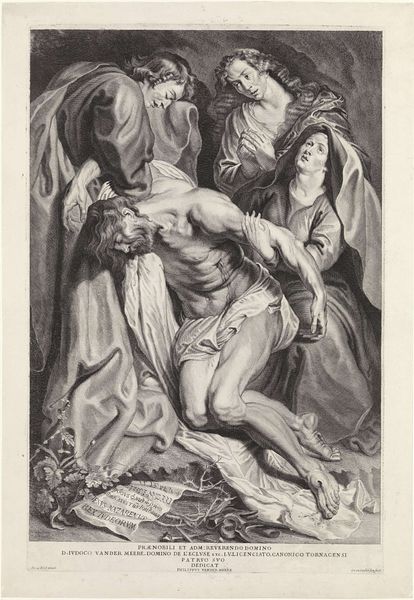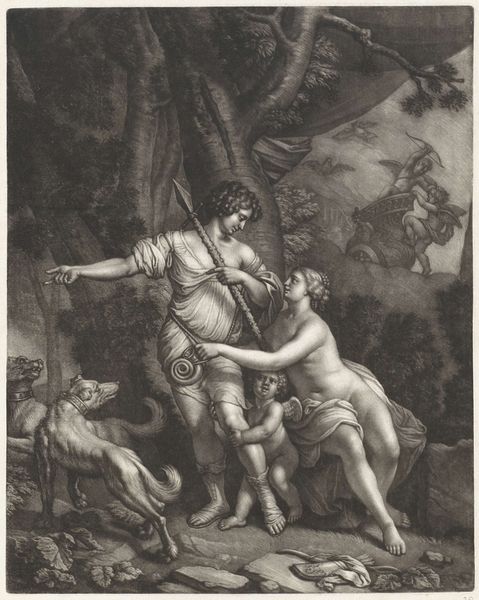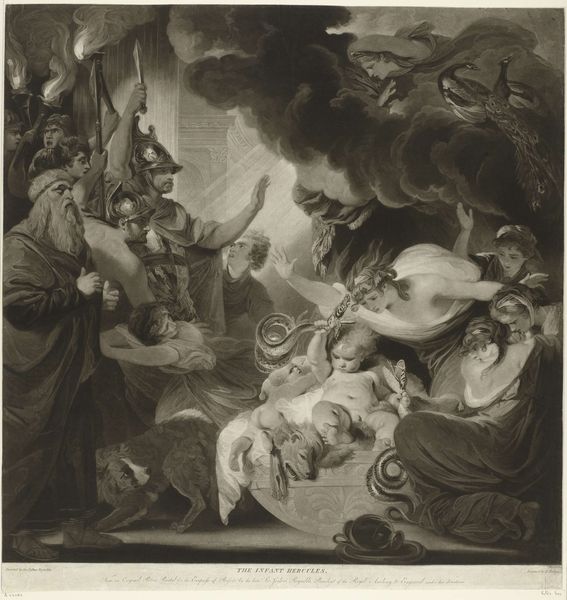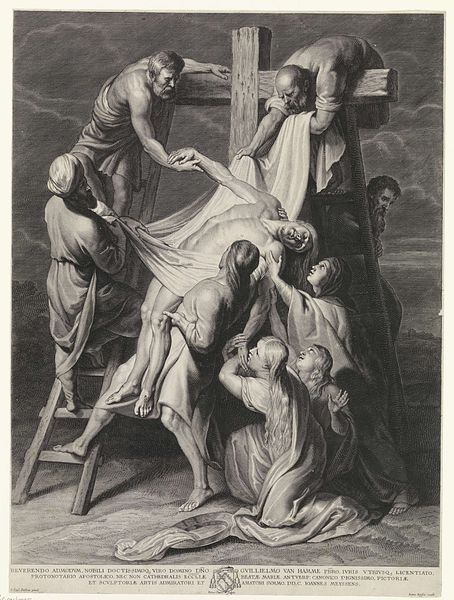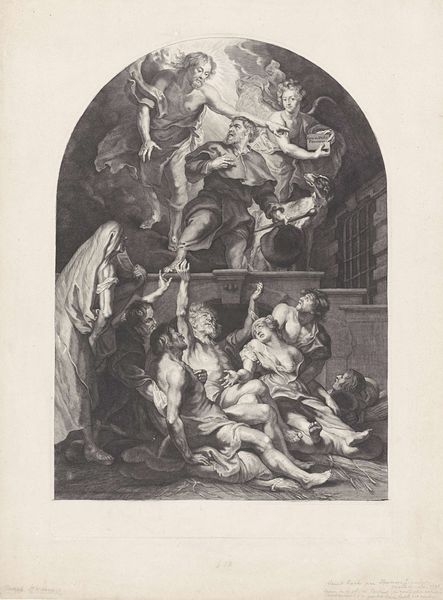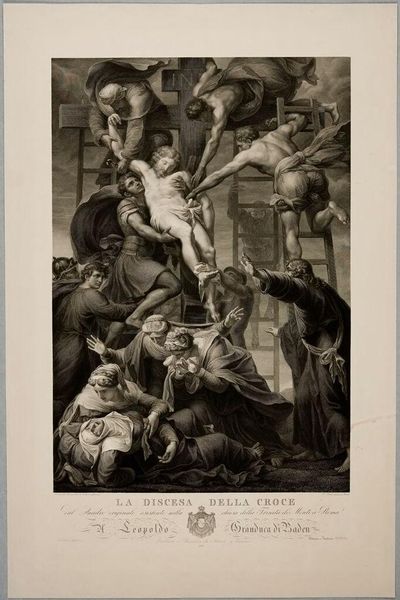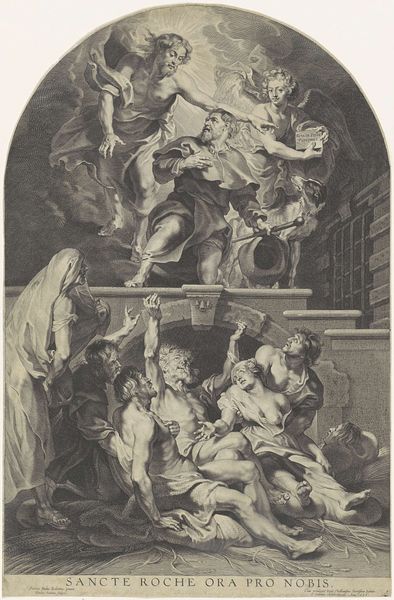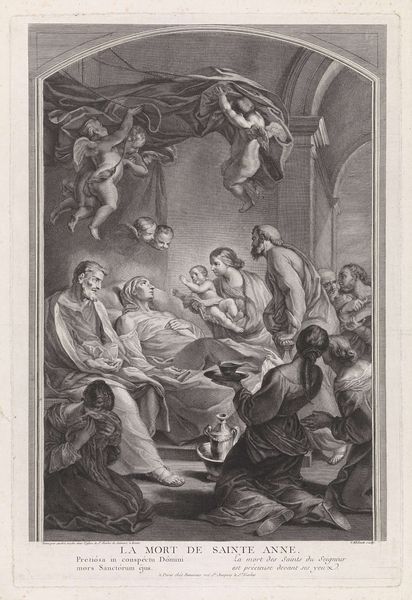
Dimensions: height 840 mm, width 588 mm
Copyright: Rijks Museum: Open Domain
Editor: This is "Kruisafname," or "Descent from the Cross," an engraving by Lambertus Antonius Claessens, created sometime between 1809 and 1818. The tonal range and line work are exquisite. How would you interpret this work? Curator: Observe the central figure: Christ, almost limp, being lowered. The arrangement of figures isn't merely representational. Look how the figures are arranged. The entire composition—the cross, the ladder, the gathering of mourners—becomes a tableau of shared grief, echoing through the ages in countless artistic depictions of this pivotal moment. Notice anything in particular that repeats in artworks about death? Editor: The faces. Some of them look pretty distressed, like they are reliving the trauma. Curator: Precisely. Consider how the artist uses lighting. Notice where the brightest areas are, drawing your eye to Christ's body and the faces of those closest to him. Light in such images is not just illumination, it is symbolic, drawing the eye towards redemption in later depictions. Can you discern the cultural narrative being perpetuated here? Editor: The engraving immortalizes a biblical scene, yes, but it also emphasizes human emotions like empathy and sorrow, making it easier to identify with religious figures. Curator: Precisely. It is as much a psychological landscape as it is a religious one. How fascinating that even in this moment of sorrow, the symbols of faith remain a point of connection through generations. Editor: I see now. It’s about more than just illustrating a historical event; it's about how we continue to connect with that event on an emotional and symbolic level. Curator: And how those symbols, that visual language, persist, evolving yet retaining their power to move us. A testament to art's enduring role in shaping cultural memory.
Comments
No comments
Be the first to comment and join the conversation on the ultimate creative platform.
